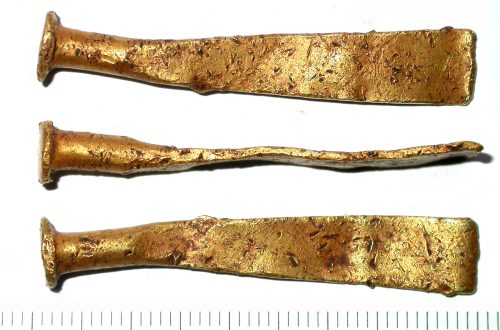As we have been developing the Heritage Key online areas, we have tried to find a good working definition of the “Ancient World.” On some levels this is easy to do. We can draw a crude line at the Middle Ages and say everything before that is Ancient. So we then might conclude that anything made by man before 565AD, the death of the roman emperor Justinian, could be called Ancient. Some things are more Ancient than others.
In the 6th Century AD the Eastern Roman Empire was based out of Constantinople (now Istanbul, Turkey) and the Emperor Justinian ordered the building of Hagia Sophia, the first great domed church. Hagia Sophia is the ultimate architectural expression of the Byzantine period and certainly a milestone in world history. It was the largest cathedral on earth for almost 1,000 years.
There was also in 541-542AD the start of the Bubonic Plague, which Justinian contracted and survived, which dramatically impacted the population in Europe (estimates range from 25% to 60%) killing tens of millions of people through to 700AD. It may have been a flea, carried on a rat from the Gobi desert, that brought this disease into Byzantium and then across Europe. The world was an inter-connected network even 1,500 years and more ago. The Silk Road was the main trading link between Europe and Asia for thousands and thousands of years at this time.
In the sense that Modern is what you make of it, so must be the Ancient.“
While the 6th century has major changing events, can we really consider a definition of the entire Ancient World without thinking beyond a European perspective? There are cultures in Asia that have come and gone since 565AD that seem very ancient indeed. Take the Khmer who over a 37 year period finished the spectacular Angkor Wat city which is one of the greatest places ever ever constructed (and visible from the space station apparently). Take the Easter Island giant Moai which were made in 400AD or maybe as late as 1700AD. Or consider the ruins of the Inca’s Machu Picchu, delicately positioned on the edge of tall mountains, which was build in 1430AD. All of these sites seem to be the essence of the ancient world that we are keen to visit and learn more about.
So then what is it that sparks our interest about places that seem Ancient? It is certainly digging into mystery and the excitement of discovery. Our imaginations buzz when we guess about the people that used Stonehenge in 2,500 BC. What was life like in Jericho, the longest constantly inhabited city, 9,000 years ago? Did the walls really come down? Why did the hunter-gatherer Natufians stop wandering and build the first towns 12,500 years ago? And stare in awe at paintings from the cave of Chauvet made by the first artists 35,000 years ago.
The scale of construction in the ancient world amazes us. We stand below the great in Egypt and try to figure out how such a thing could be made so long ago. How could the first emperor of China have produced more than 8,000 life size terracotta warriors–fully armed at the time. And what about the city of Alexandria having a population of more than 1 million people back in 100BC!

And of course it is also the ruins. From scatter pieces of stones to the skeletons of entire urban areas such as Ephesus or the uniquely flash frozen Pompei, we love to touch and seek the connection to these lost cultures. We enjoy imagining what these broken structures looked like when they were new and what impact did they have on the people that first gazed upon them.
The Ancient World seems very different from our present day.
In the end, I think it is best not to worry too much about defining what should be “Ancient” or not.We should rather share our impressions about the sites, artefacts and legends that seem so very different and far away from our present day lives. Most importantly we should get out or get online and explore. There is a break at some point, perhaps 565AD is good enough for Europe, but China had dynasties from 211BC to 1912AD. In the sense that Modern is what you make of it, so must be the Ancient.



